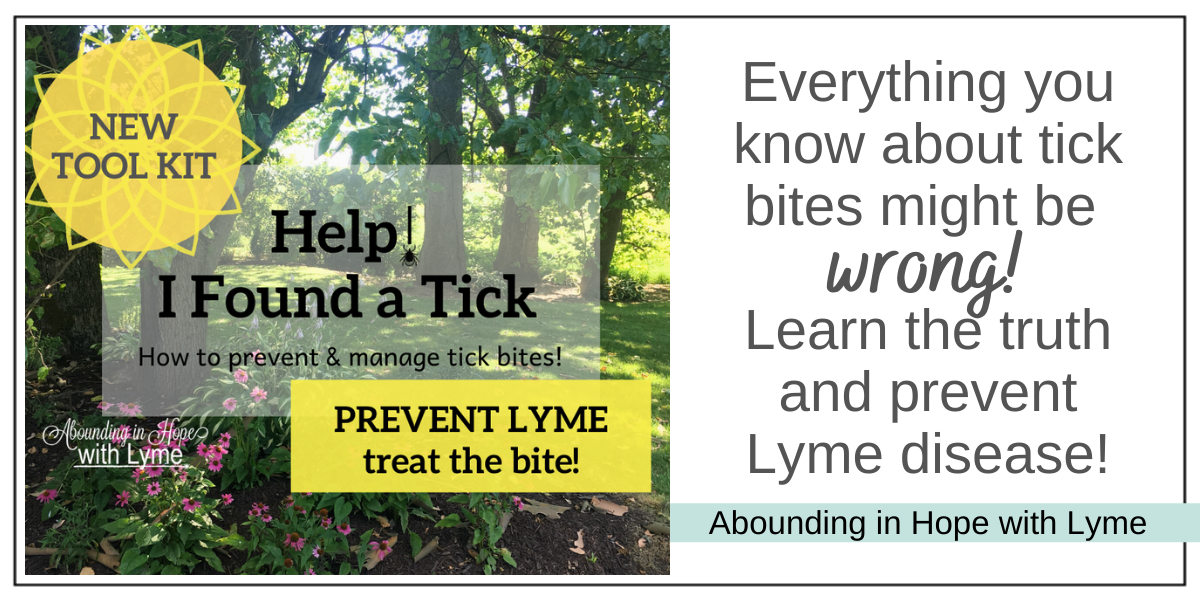Lyme disease can cause devastating symptoms if not caught early. It’s vitally important that you educate yourself beforehand to know what to do if you get bit by a tick and how to treat an early case of Lyme disease. Unfortunately, most doctors do not know the correct protocol for treating an early Lyme infection and may give only one dose of Doxycycline. One dose of antibiotics could be detrimental when it comes to Lyme disease. If you’ve been exposed to ticks and have unusual symptoms including diarrhea or vomiting, it’s a good idea to suspect tick-borne diseases. Only 25% of Lyme infections produce a classic bulls-eye rash and 25% of infections may produce rashes of other types.
Two Pills OR Two Weeks Of Antibiotics
It’s not uncommon to be prescribed 2 Doxycycline pills, a total of 200 mg, or just 14 days of antibiotics. Some doctors will prescribe 21 or 28 days of antibiotics.
Doctors May Not Know
Unless your doctor is doing their research they may be following outdated treatment protocols for early Lyme disease. Treatment protocols that consist of short courses of antibiotics can give a false assurance of a cure that isn’t possible with insufficient treatment.
While it’s not known what dosage or duration of antibiotics will treat an early Lyme infection, it is known that short courses and low doses do not work. Refer to the ILADS New Treatment Guidelines.
These protocols have potentially made hundreds of thousands of people sick with devastating symptoms from tick-borne diseases. This happened to my daughters.
My Experience
When my second daughter was 12 years old I pulled a deer tick from her groin area and quickly flushed the nasty little thing down the toilet.
The next day I called her pediatrician and made an appointment. A similar thing happened to my third daughter.
Here’s what I didn’t know:
- I didn’t know that ticks could be tested with more accuracy than a human so I didn’t save the tick.
- I didn’t know that ticks could transmit more infections other than Lyme.
- I didn’t know Lyme disease could make you so sick, potentially risking your life.
- I didn’t know that only 25% of Lyme infections cause a bulls-eye rash.
- I didn’t know that my doctor wouldn’t know the correct information about ticks, Lyme disease, or how to treat.
My pediatrician patted me on the shoulder, told me not to worry, and said that ticks can’t transmit Lyme disease unless they’ve been attached for more than 24 hours and produce a bulls-eye. ((This is not true!)) She told me that if I wanted she could give my daughter one dose of doxy and that it would act prophylactically to prevent Lyme.
I didn’t know that this was FALSE information! I trusted my pediatrician. I valued her knowledge and education.
As a result, my daughters became incredibly ill, suffered a tremendous amount of pain, and lost years of their childhood and teenage lives.
My heart breaks for how my children suffered, all because I didn’t know and because our doctors have not been educated in the area of tick-borne diseases.
This is why I’m passionate about helping other moms so that they don’t have to watch their children suffer needlessly.
My two daughters could have had their infections cured in the very beginning if only their pediatrician had been educated to understand how tick-borne infections work and what it takes to keep them from becoming chronic illnesses.
About Lyme, Treatment, & Antibiotics
Lyme bacteria (Borrelia Burgdorferi) have a life cycle of 4 weeks. Lyme is known to form biofilms around clusters of bacteria to protect itself from the treatment of antibiotics so treating past the life cycle is essential.
One or two doxycycline pills will only cause your Lyme blood test to be negative, prevent a rash, and possibly drive the bacteria deeper into your system. That’s all!
The tests for Lyme are grossly inaccurate as it is. There are over 300 strains of Borrelia in the world, 100 strains in the U.S., and standard lab tests only detect one strain.
Antibodies are not detectable before the 4-week mark of the initial infection and after the 4-week mark, the patient becomes chronically ill.
Many chronically ill Lyme patients report being treated with 14 days or 21 days of antibiotics and state that their symptoms may have gone away for a time. They report symptoms recurring weeks, months, and sometimes even years later. Many times symptoms came back so slowly that they didn’t make the connection. Other times, symptoms come on after surgery or major illness.
What To Do?
ILADS Recommendations
If you choose antibiotics for a tick bite the very minimum recommended treatment course is 28 days. If you have a bulls-eye rash, a rash of any other type, or any other symptoms that you think are related to Lyme, you must request 6-12 weeks of antibiotics. Always treat until all symptoms are gone. If they come back you will need to keep treating. This is one reason I prefer homeopathy or herbs.
Any rash caused by a tick bite could be caused by the Borrelia bacteria and treatment needs to be started as soon as possible.
Pay Attention to Symptoms
Once you’re close to finishing your antibiotic, notice how you’re feeling and whether or not all of your symptoms have resolved. If they haven’t or you’re not sure, you can ask your doctor for a few more weeks.
This can be difficult and many doctors will refuse to prescribe more antibiotics. It may be necessary to find an ILADS-trained physician, Naturopath, or homeopath who can help you regain your health and prevent tick-borne diseases from causing chronic illness.
Another word of caution, I’ve had a number of people tell me that their doctor explained that their symptoms from Lyme will hang around for up to a few months after their short course of antibiotics is finished. They said it takes time until all the dead bacteria resolve from the body. I am not a doctor but from my research and experience, this usually means you still have Lyme or one of the co-infections.
Unfortunately, they believed their doctor, continued to have unexplained symptoms, and eventually were diagnosed with things like Rheumatoid Arthritis, Lupus, MS, Fibromyalgia, and Chronic Fatigue Syndrome when in fact they may still have a Lyme infection.
Alternative Care
Another option if you can’t get the needed course of antibiotics would be to find an alternative care practitioner or herbalist. We have found our greatest healing came through these treatment types. The benefit of natural treatment is that it supports your immune system while taking care of any possible infections.
Why You Should Treat Every Tick
These aren’t your Grandma’s ticks! These aren’t even the same infections most of us were at risk of getting when we were growing up. Things have changed and more bacterial, viral, and parasitic infections are being found in ticks, fleas, mosquitoes, and biting flies than ever before.
Please do your research, especially if you’re the outdoorsy type. Browse around my website, click the links for my favorite websites & resources and you’ll learn all you need to know about vector-borne illnesses and how to protect yourself.
It’s better to guard yourself with knowledge before you’re sitting in the doctor’s office wondering what to do.
Even when you have the facts it can still be next to impossible to get your doctor’s cooperation.
In a nutshell, the recommendations are to get 28 days of antibiotics for each tick-bite and 6-12 weeks if there are any symptoms as a result of a tick bite.
Be Lyme smart and prevent chronic illness.
No claims are made as to how our treatment protocol may or may not help you individually or whether or not it would be useful for your unique health condition. This blog post is not intended to be an endorsement of any specific product or treatment but rather a source of information for your own personal research.




Leave a Reply